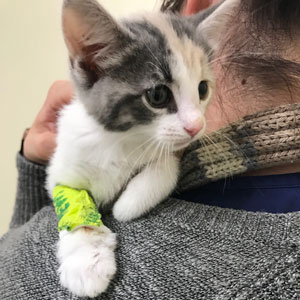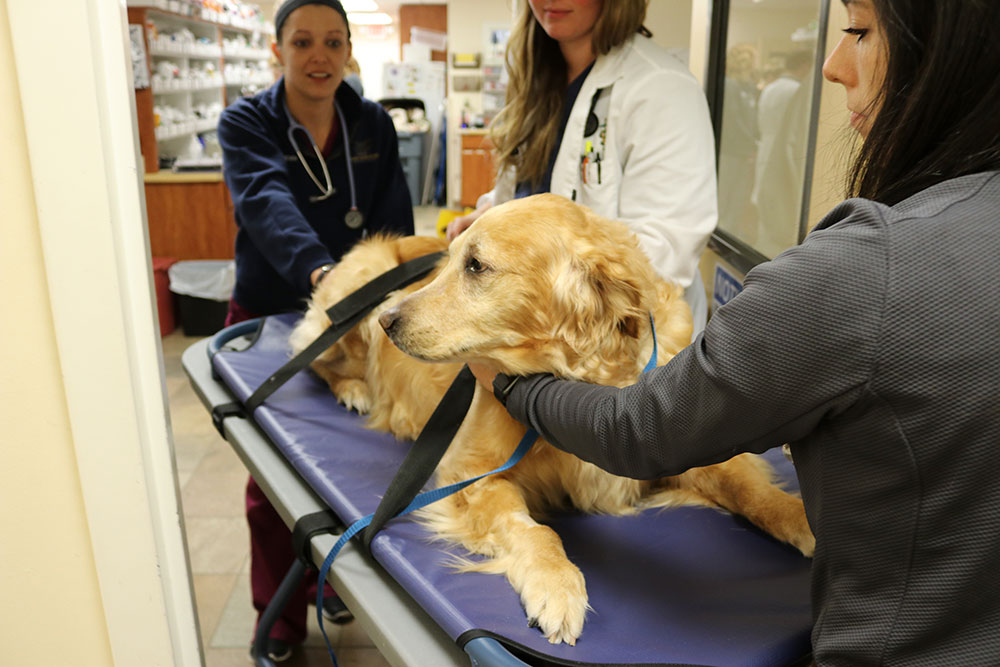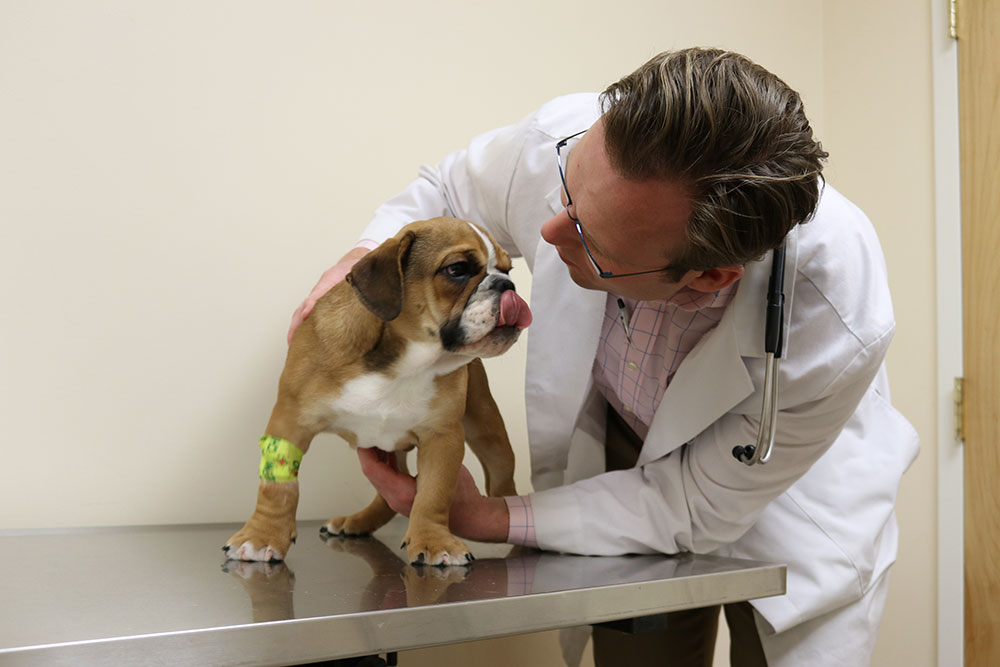 Under ordinary circumstances, your pet may be a very calm, docile individual. However, when experiencing pain or fear, even the most placid animal may bite or scratch unexpectedly. It is always best to use caution when handling and transporting an injured pet, even if you doubt they would ever hurt you.
Under ordinary circumstances, your pet may be a very calm, docile individual. However, when experiencing pain or fear, even the most placid animal may bite or scratch unexpectedly. It is always best to use caution when handling and transporting an injured pet, even if you doubt they would ever hurt you.
Recommendations for handling an injured or frightened pet
Restrict movement:
Use a blanket to wrap your pet. This will minimize your pet’s ability to struggle, scratch or bite, and may also serve to calm them by limiting their vision.
If you are comfortable applying a muzzle to your pet, it is recommended to do so before attempting to move them if they are injured. If you don’t own a muzzle, use a soft leash or other long soft cloth to wrap around your pet’s muzzle to prevent them from opening their mouth. Do not muzzle a pet that is in respiratory distress or having trouble breathing.
Transport your pet:
If your pet is unable to move, or if you feel that it is unsafe for them to move on their own, use an ironing board or other strong flat surface as a stretcher to help transport your pet to the car.
Care for open wounds:
If your pet has an open wound, apply direct pressure to help slow the bleeding.
Contact your veterinarian:
Call your veterinarian or the nearest available emergency hospital to receive additional information regarding transportation or information on how to best handle your pet’s specific case. Calling ahead will also allow time for your chosen facility to prepare for your pet’s arrival, especially if you'll need assistance getting your pet into the hospital.



